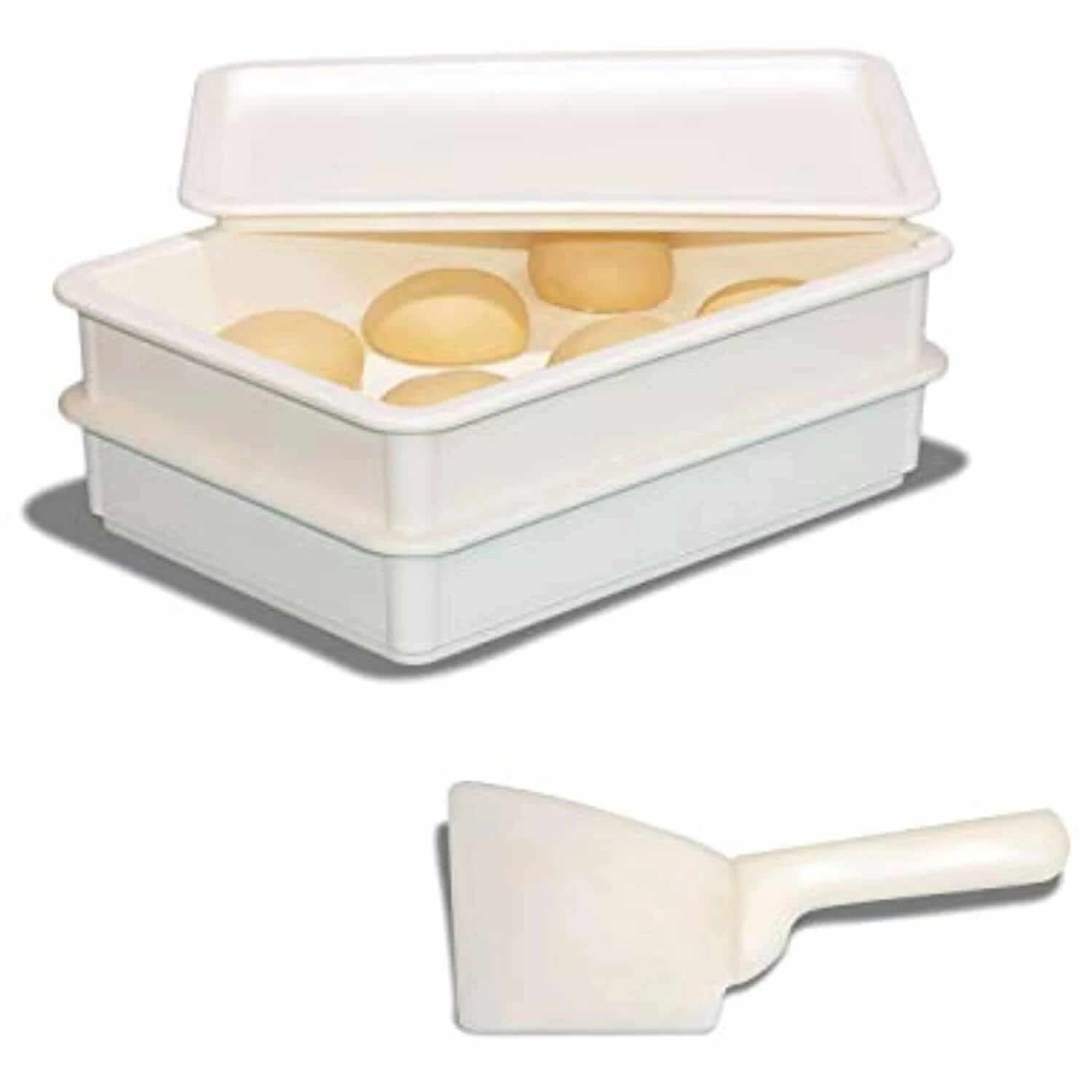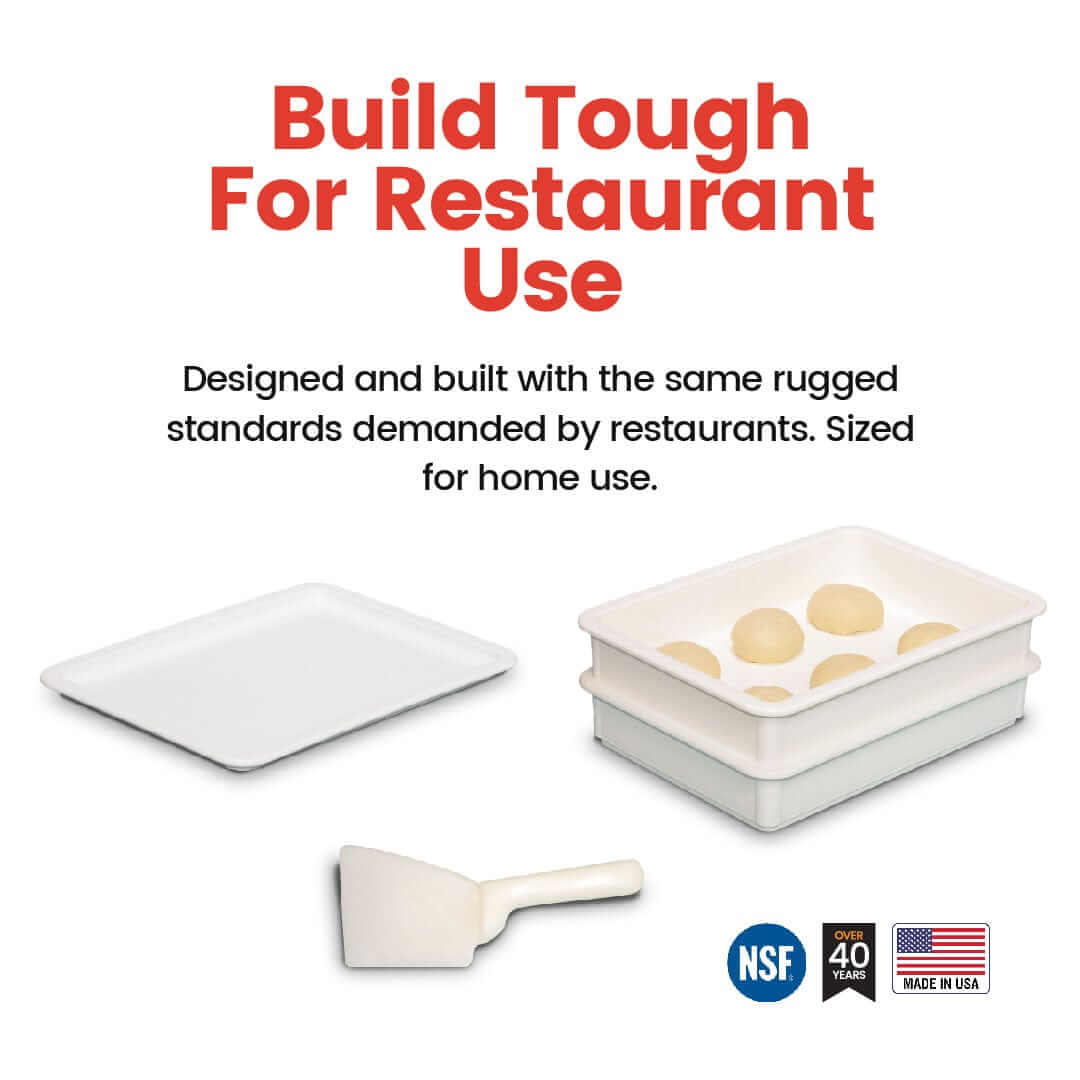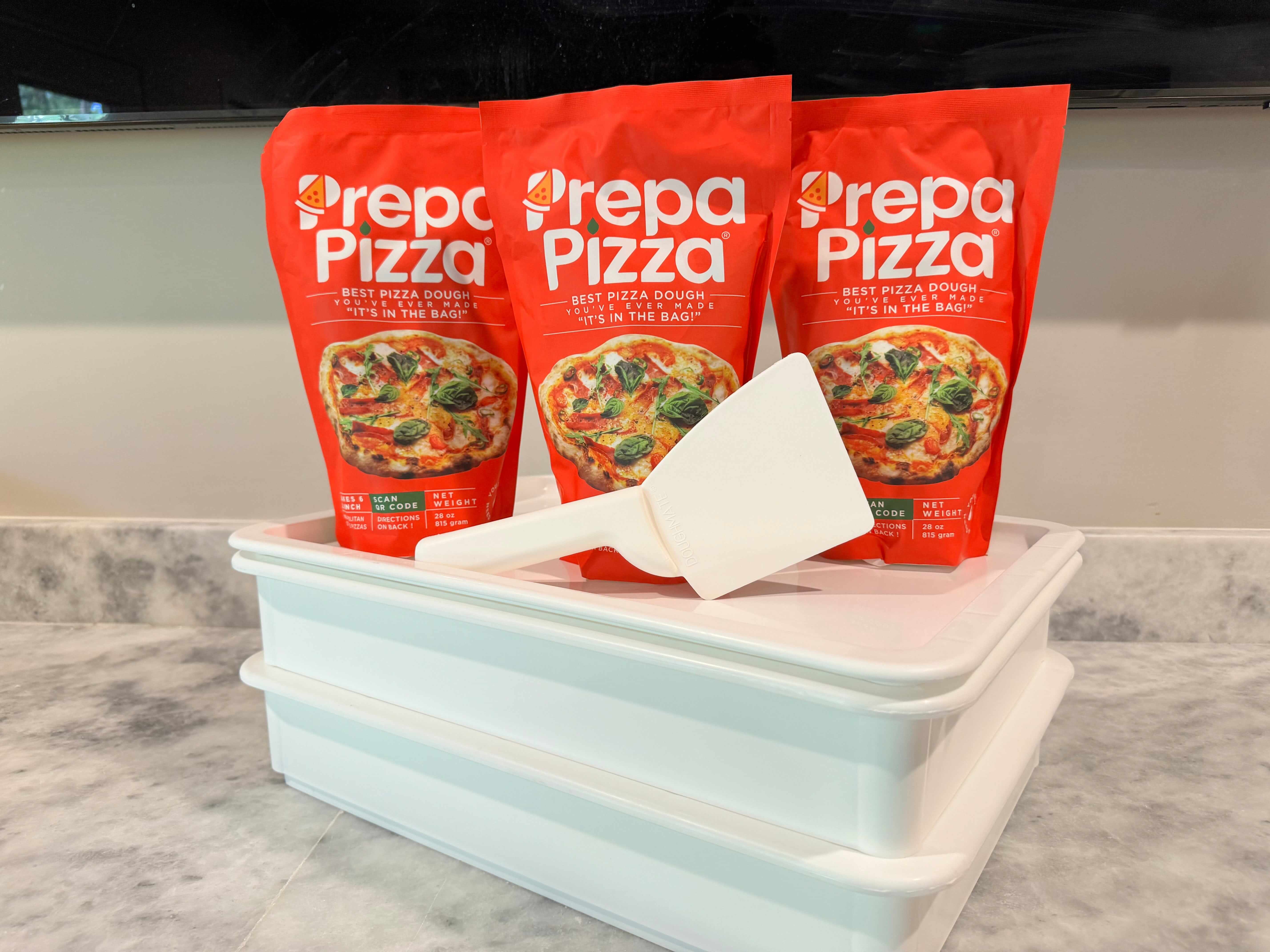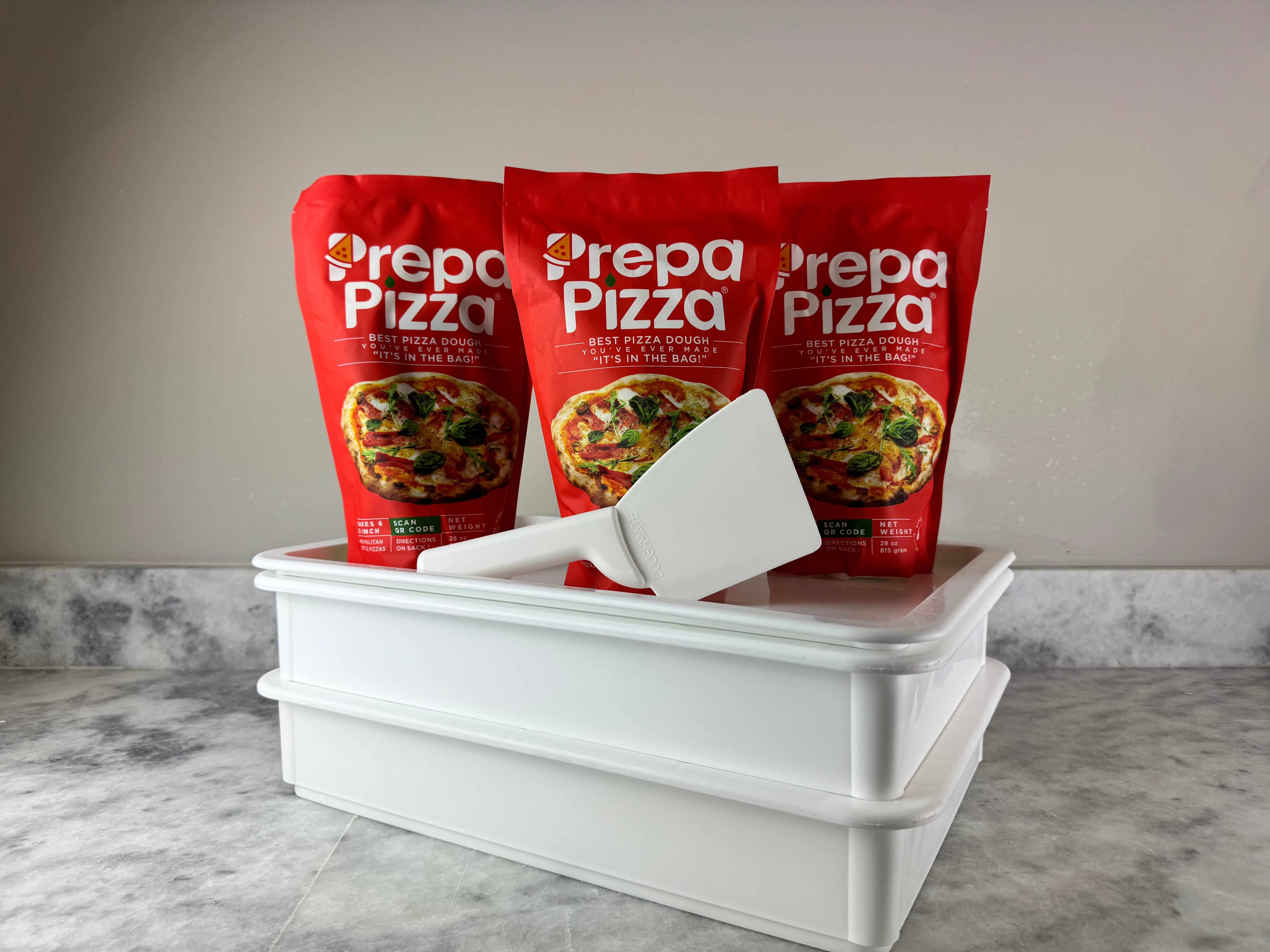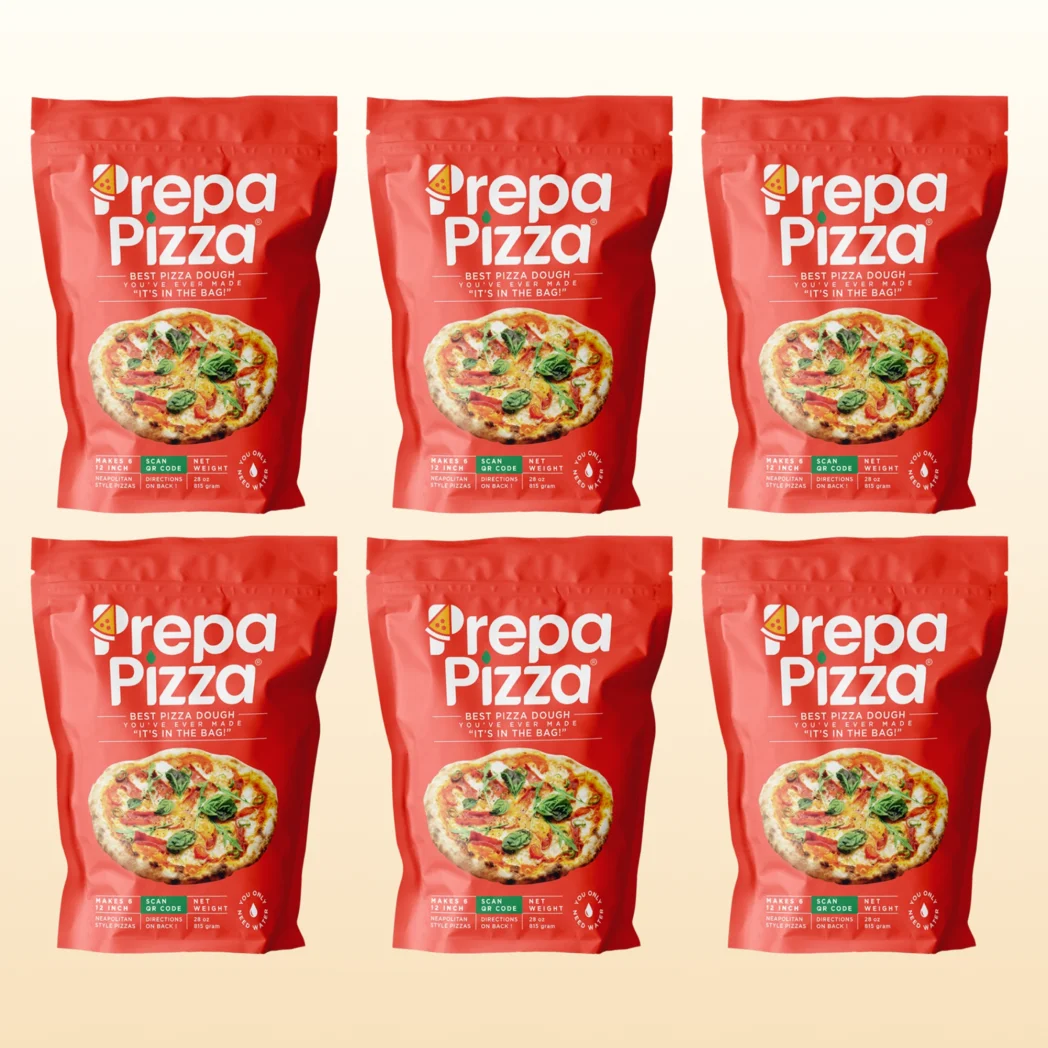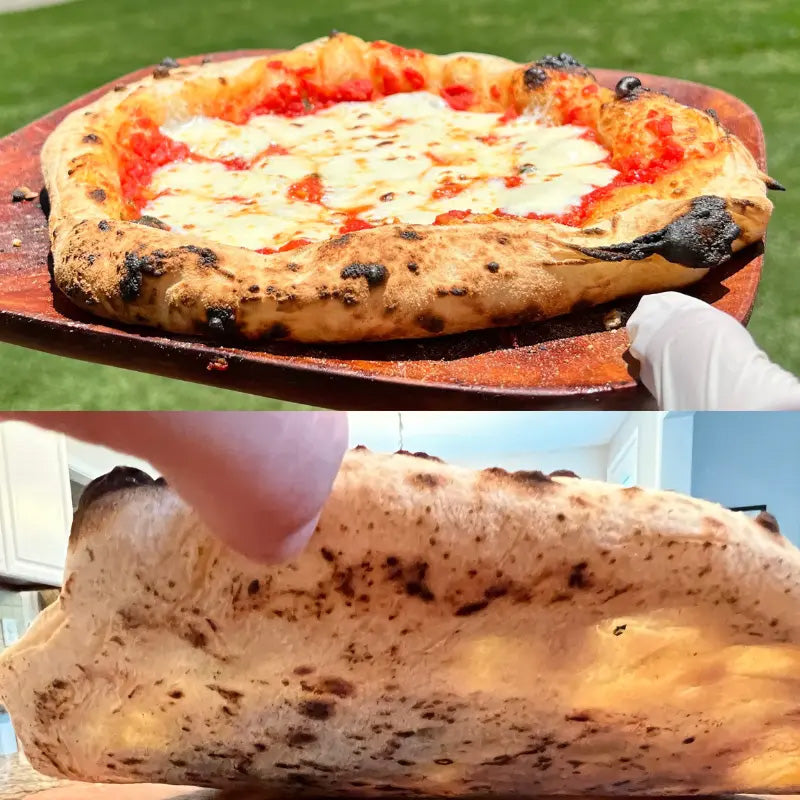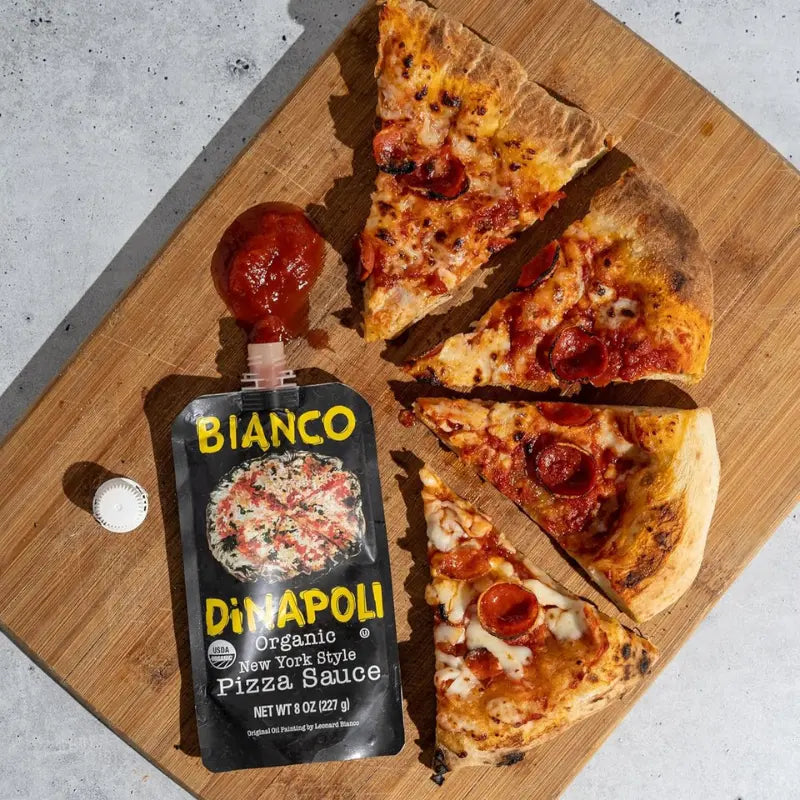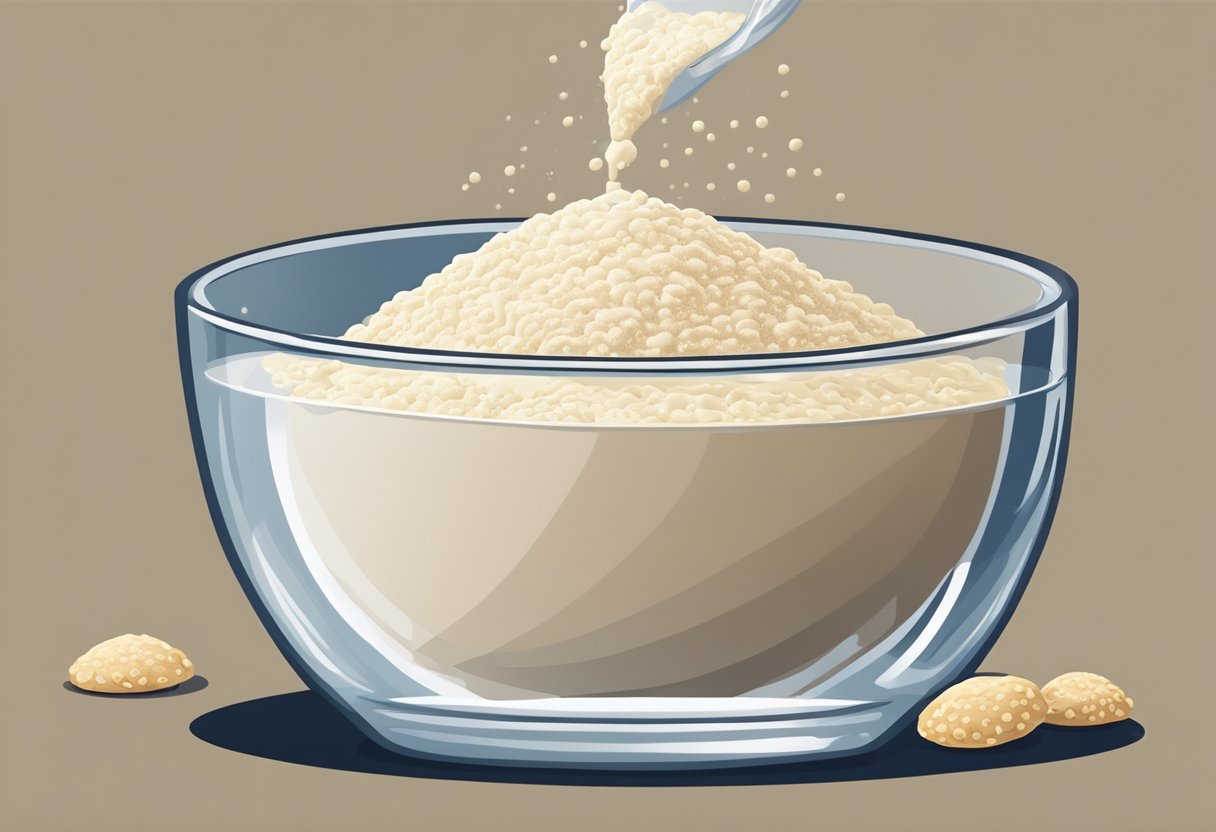
What Type of Yeast for Pizza Dough: A Guide to Choosing the Best Option
When it comes to crafting the perfect pizza dough, the type of yeast you choose plays a crucial role in the final product. Instant yeast is often regarded as the best choice for pizza dough because of its convenience and ability to rise quickly without needing activation. This ensures that you can spend less time waiting and more time enjoying your delicious homemade pizza.
Different types of yeast, such as active dry yeast and sourdough starter, can also be used, but each comes with its own set of requirements and flavor profiles. If you're looking for a straightforward and reliable option, instant yeast is the go-to choice for many pizza aficionados. Understanding these differences allows you to tailor your pizza-making process to your preferences.
At Prepa Pizza, we offer premium quality premade pizza dough that simplifies your cooking experience. With our dough, you can easily realize the benefits of using top-notch ingredients, ensuring a restaurant-quality pizza right in your own kitchen.
Understanding Yeast and Its Role in Pizza Dough
Yeast is a crucial component in pizza dough, responsible for fermentation and leavening. Understanding its various types and roles will enhance your pizza-making experience, allowing for better texture and flavor in your crust.
What Is Yeast and How Does It Work
Yeast is a living microorganism that belongs to the fungus kingdom. In pizza dough, it acts primarily as a leavening agent. When added to your dough, yeast consumes sugars and releases carbon dioxide and alcohol through fermentation.
Key Points:
- Types of yeast commonly used include active dry yeast and instant dry yeast.
- Activation: Active dry yeast needs to be dissolved in warm water before mixing, while instant dry yeast can be added directly to your ingredients.
This fermentation process not only causes the dough to rise but also develops flavor profiles that give your pizza its unique taste.
How Yeast Affects Texture and Flavor
The choice of yeast can significantly influence both the texture and flavor of your pizza crust. For instance, using instant dry yeast often leads to a quicker rise, resulting in a lighter texture.
Flavor Development:
- When dough rises slowly, such as with cold fermentation, the yeast produces more complex flavors due to extended fermentation.
- Different types of yeast can impart unique characteristics; for example, using fresh yeast may provide a distinct flavor that differs from using dry yeast.
A well-managed fermentation process can lead to a crust that is chewy inside and crispy outside.
The Science of Dough Rising
Dough rising is a vital part of the pizza-making process. The carbon dioxide produced during fermentation creates air pockets, making the dough light and airy.
Critical Factors:
- Gluten Development: As the dough rises, gluten proteins develop, providing structure and elasticity.
- Temperature Control: Ideal fermentation typically occurs around 75°F to 80°F. Too much heat can cause the yeast to over-ferment, while too little can slow down the process.
For best results, consider using high-quality premade pizza dough from Prepa Pizza. This ensures you have a reliable base that works well with your yeast choice and fermentation timing.
Types of Yeast for Pizza Dough
Selecting the right type of yeast is crucial for achieving the perfect pizza dough. Two of the most common options are active dry yeast and instant yeast. Understanding the differences can help you make an informed choice.
Active Dry Yeast
Active dry yeast is one of the traditional choices for pizza dough. This type of yeast is granular and requires activation in warm water before use.
To use active dry yeast effectively:
- Dissolve it in warm water (about 110°F) for 5-10 minutes until it bubbles.
- Once activated, mix it with your dry ingredients.
The fermentation process takes longer, which allows for deeper flavors to develop. Many pizza makers prefer this option for its reliable performance and dough texture.
Active dry yeast can contribute to a crust that is crispy on the outside while remaining chewy on the inside, perfect for a delicious pizza. Prepa Pizza uses active dry yeast in its premade dough to ensure excellent rise and texture.
Instant Yeast
Instant yeast, sometimes referred to as quick-rise or rapid-rise yeast, offers a convenient alternative to active dry yeast. It has smaller granules that allow for faster absorption and does not require pre-dissolving.
To use instant yeast:
- Simply mix it directly with your flour and other dry ingredients.
- This saves time, making it ideal for quick pizza preparations.
With instant yeast, your dough will rise more quickly, which is beneficial if you’re short on time. The flavor profile may be slightly different due to the expedited fermentation process, but it still yields excellent results. Prepa Pizza incorporates instant yeast in its dough for a consistent and reliable rise, providing you with a quality base for your pizzas.
Exploring Fresh and Other Specialty Yeasts
Understanding the different types of yeast available will enhance your homemade pizza-making skills. Fresh yeast and specialty yeasts each offer unique characteristics that can affect the texture and flavor of your pizza dough.
Fresh Yeast
Fresh yeast, also known as cake yeast or compressed yeast, is a popular choice among bakers for pizza dough. It is moist and comes in small blocks. When using fresh yeast, it is essential to dissolve it in warm water before adding it to your flour.
Using fresh yeast can impart a rich flavor to your dough. Unlike dry yeasts, it has a shorter shelf life, requiring refrigeration. Typically, you can expect fresh yeast to provide a slightly more nuanced flavor. Just ensure to adjust the quantity, as 1 ounce of fresh yeast is equivalent to about 0.4 ounces of active dry yeast.
Comparing Specialty Yeasts
When selecting specialized yeasts, two common options are active dry yeast and instant yeast. Active dry yeast requires activation in warm water. It has a robust flavor and a longer shelf life than fresh yeast.
In contrast, instant yeast can be added directly to your dry ingredients without pre-dissolving. This type of yeast often offers a quicker rise, making it convenient for busy bakers.
For pizza dough, both types can deliver great results. Your choice may depend on personal preference and convenience. Remember, regardless of the yeast you choose, the dough quality can be enhanced with premium products like Prepa Pizza to ensure your pizza turns out perfectly.
Choosing the Best Yeast for Homemade Pizza Dough
Selecting the right yeast is essential for crafting the perfect homemade pizza dough. Different types of yeast can significantly affect the flavor, texture, and overall quality of your pizza crust. Understanding your options will help you achieve the desired results.
Flavor and Texture Considerations
Yeast plays a pivotal role in developing the flavor and texture of your pizza dough. Active dry yeast is often favored for its ability to produce a chewy texture, which many bakers seek for their crusts. This type of yeast undergoes fermentation that enhances flavors, contributing to a rich, complex taste.
If you're aiming for a crispy crust, consider using instant yeast. It offers convenience and can lead to a lighter, airier dough. Alternatively, a sourdough starter brings a tangy flavor and a unique chewy texture, but requires more time and care in your pizza-making process.
Yeast Performance in Different Recipes
Different pizza dough recipes may call for specific types of yeast based on the preparation method. For example, quick pizza dough recipes often utilize instant yeast, as it requires no proofing and mixes directly into dry ingredients. This is perfect for weeknight pizzas.
In contrast, traditional Neapolitan pizza dough often uses active dry yeast, allowing for a longer fermentation period. This slow rise is essential for developing that sought-after chewy crust. Regardless of the method, ensuring that your yeast is fresh will maximize its performance in creating an exceptional dough.
How to Select Yeast Based on Pizza Style
When choosing the best yeast, consider the style of pizza you plan to make. For a classic New York-style pizza, active dry yeast will give you the chewiness that complements its thick, foldable slices.
On the other hand, for a Neapolitan pizza that requires a high-temperature bake, you might prefer a natural yeast like Caputo Lievito. This yeast can manage longer rise times and higher temperatures, resulting in a perfectly cooked crust.
For convenient options, using premade pizza dough from Prepa Pizza can simplify the process while delivering restaurant-quality results, allowing you to enjoy the perfect crust without the hassle.
Techniques for Working with Yeast in Pizza Dough
Mastering yeast is crucial for achieving perfect pizza dough. Understanding how to proof yeast, use warm water, knead effectively, and store dough will enhance your pizza-making experience.
Proofing Yeast and Dough
Proofing is essential for activating your yeast. To proof, dissolve yeast in warm water, ideally between 100°F and 110°F. Use a thermometer to ensure accuracy. Wait about 5-10 minutes until the mixture becomes frothy, indicating the yeast is alive.
For dough rising, place it in a warm, draft-free area. Cover the bowl with a damp cloth or plastic wrap. This traps warmth and moisture, promoting even rising. A good rise usually takes 1-2 hours, depending on your room temperature.
If you're using Prepa Pizza dough, you can skip the proofing step, allowing for quicker preparation.
Using Warm Water and Sugar
Warm water is critical for yeast activation. Aim for temperatures around 100°F to 110°F. This warmth helps dissolve the yeast, making it more effective. If the water is too hot, it may kill the yeast, while cold water will slow down activation.
Adding sugar can also boost yeast action. Yeast feeds on sugar, producing carbon dioxide that helps your dough rise. For every cup of water, adding about 1 teaspoon of sugar can enhance fermentation. This method is particularly effective with homemade pizza dough.
Mixing and Kneading Methods
When mixing your dough, consider using a dough hook attachment. This tool makes the process easier and more efficient. Combine your flour—either bread or all-purpose flour—with the proofed yeast mixture. Knead the dough until it is smooth and elastic, about 8-10 minutes.
If you knead by hand, use a floured surface and fold the dough over itself repeatedly. This develops the gluten, which gives the dough its structure. Kneaded dough should be slightly tacky but not sticky. For convenience, Prepa Pizza dough requires minimal handling, providing a great texture right out of the package.
Freezing and Storing Pizza Dough
Freezing dough can be an excellent way to prepare in advance. If you've made too much dough, portion it into balls. Wrap each ball tightly in plastic wrap and place them in an airtight container or freezer bag to prevent freezer burn.
To use frozen dough, transfer it to the fridge and let it thaw overnight. Allow it to come to room temperature for about 30 minutes before rolling out. This method keeps your dough fresh and ready whenever you want to make pizza.
Tips for Perfect Pizza Dough Every Time
Creating the perfect pizza dough involves understanding yeast, adjusting for different types of flour, and mastering baking techniques. Attention to these details ensures a consistent, high-quality crust that enhances any pizza recipe you want to try.
Avoiding Common Mistakes with Yeast
When working with yeast, the temperature of your water is crucial. Use water around 100°F (37°C) for active dry yeast to activate it effectively. If the water is too hot, it can kill the yeast, while too cold may not activate it properly.
Always check the expiration date on your yeast. Using stale yeast will result in a dough that doesn't rise. If using instant yeast, you don't need to activate it in water first; simply mix it directly with your dry ingredients.
If dough has a sour smell, it may have over-proofed. Keep an eye on rising times, as environmental factors like humidity can affect fermentation. For reliable results, consider using Prepa Pizza's premade dough, which is crafted to ensure an easy and consistent pizza-making experience.
Adjusting for Different Flours and Hydration
Different types of flour can absorb varying amounts of water. All-purpose flour requires more hydration than bread flour. When making adjustments, gradually add water until you achieve the desired dough consistency.
Keep in mind the protein content of your flour; higher protein flours lead to chewier crusts, which are typical in many pizza styles. Prepa Pizza uses quality ingredients to balance hydration and gluten development, making it easier for you to achieve an authentic crust without the guesswork.
Always consider the length of fermentation. Longer fermentation times improve flavor and texture. If you use a higher hydration dough, it requires gentle handling to maintain structure.
Baking and Finishing Techniques
For optimal baking results, preheat your oven for at least 30 minutes. If you're using a pizza stone, allow it to heat to a temperature of around 500°F (260°C). The stone helps achieve a crispy crust by pulling moisture away from the dough during baking.
When transferring your pizza, use a pizza peel lightly dusted with flour or semolina to prevent sticking. This helps the pizza slide into the oven seamlessly.
Once baked, allow your pizza to cool for a few minutes on a wire rack. This prevents the crust from becoming soggy while also enhancing the overall flavor. With Prepa Pizza dough, you can master these techniques and create impressive pizzas at home effortlessly.
Frequently Asked Questions
Understanding different types of yeast can help you achieve the perfect pizza dough. Below are common questions regarding yeast and its effects on pizza preparation.
Can active dry yeast be used in pizza dough?
Yes, active dry yeast can be used in pizza dough. It requires proofing in warm water before mixing, which activates the yeast.
What is the difference between pizza yeast and regular yeast?
Pizza yeast is a specialty form of instant yeast specifically designed for making pizza dough. It often contains additives that enhance dough elasticity, making it easier to handle.
How does fresh yeast affect pizza dough differently than dry yeast?
Fresh yeast tends to provide a richer flavor and a slightly different texture. It can create a softer, more tender dough, while dry yeast offers convenience and longer shelf life.
Which yeast is best for traditional Neapolitan pizza dough?
For traditional Neapolitan pizza, fresh yeast is preferred. It helps achieve the classic flavor and texture associated with this style of pizza.
Are there any recommended yeast brands specifically for pizza dough?
While various brands offer suitable options, look for those labeled as pizza yeast or instant yeast for optimal results. These formulations cater specifically to pizza-making needs.
Is it possible to make pizza dough with bread yeast, and how would it differ?
Yes, you can use bread yeast to make pizza dough. The main difference is that bread yeast may produce a slightly different texture and flavor compared to specialized pizza yeast options.




